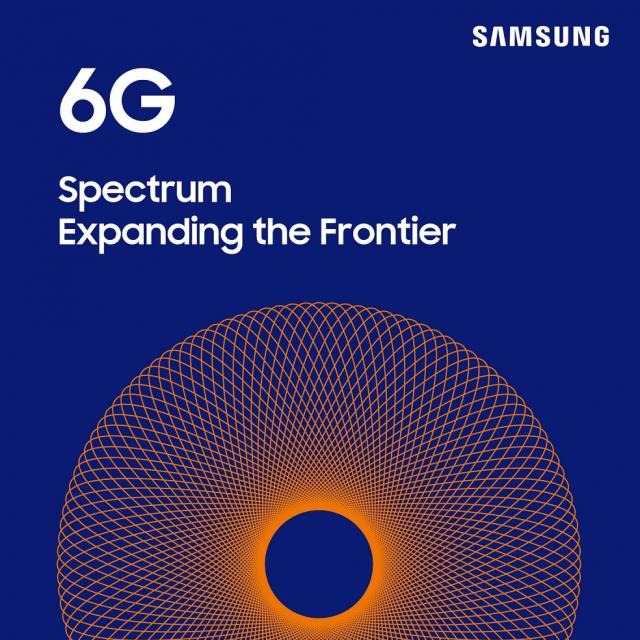
Samsung has published a white paper outlining its vision for securing global frequency bands for 6G, the next-generation communications technology. The paper 6G Spectrum: Expanding the Frontier discusses the preconditions for the spectrum needed to realize Samsung’s 6G vision. Samsung’s 6G vision was introduced in a white paper in July 2020.
Samsung has released its vision and plans to prepare for the next generation of communication systems. Read about the 6G spectrum here.
6G Spectrum: pushing the boundaries
6G requires ultra-wideband contiguous bandwidth spectrum ranging from hundreds of MHz to tens of GHz to enable new services. Think of interference-free mobile holograms and immersive extended reality (XR) that are characterized by ultra-fast communication and large amounts of data. There is also a growing demand for better coverage. Therefore, Samsung proposes to consider all available bands for 6G, from low-band below 1 GHz, to mid-band in the 1-24 GHz range and high-band in the 24-300 GHz range.
It is also important to secure new bands for 6G commercial use, as 5G networks will still be in use when 6G implementation begins. The mid-band within the 7-24 GHz range with a higher data rate and reasonable coverage can be supportive. The sub-terahertz (sub-THz) band in the 92-300 GHz range is being considered to support ultra-high data rate. The white paper also discusses reusing existing bands deployed to 3G, 4G and 5G networks as another way to get all the spectrum needed for 6G. In addition, it is becoming clear that research into forward-looking regulations and technologies in spectrum usage is essential to provide efficient and flexible support for 6G and other services.
New Findings on 6G Candidate Technologies
Simultaneously with the publication of the white paper on the 6G spectrum, Samsung is also highlighting its research findings on some promising technologies for 6G. This mainly concerns sub-THz band communication, reconfigurable intelligent surface (RIS), cross division duplex (XDD), full duplex, artificial intelligence (AI)-based nonlinearity compensation (AI-NC) and AI-based energy saving (AI). -ES).
Sub-THz is considered a spectrum candidate for 6G communications, which is expected to support data rate up to 1 Terabit per second (Tbps), 50 times faster than 20 Gbps of 5G networks. Samsung successfully demonstrated a data speed of 6 Gbps at a distance of 15 meters indoors in June 2021. Also, Samsung demonstrated 12 Gbps at a distance of 30 meters indoors and 2.3 Gbps at a distance of 120 meters outdoors the following year.
RIS can improve beam sharpness and direct or reflect the wireless signal in a desired direction using a metamaterial surface. It can reduce the loss of penetration and blocking of high-frequency signals, for example mmWave. Samsung showed that RIS lens technology improves signal strength by four times and beam steering range by 1.5 times.
XDD can improve the spreading distance of the uplink signal up to two times in the TDD system by enabling the continuous uplink transmission in a small part of the system bandwidth. Therefore, XDD is able to dramatically improve the coverage of the TDD system often used in high frequency bands. Samsung demonstrated its core technology, self-interference cancellation, at the base station.
Bee full duplex data transmission and reception can take place simultaneously on the same frequency, increasing the data rate by up to twice. Samsung successfully tested the full duplex in the mmWave band with a base station and a terminal 100 meters away. This demonstrated the self-interference suppression of more than 114 dB and a 1.9-fold improvement in the data rate.
AI-NC uses AI at the receiver to compensate for signal distortion caused by the nonlinearity of a transmitter’s power amplifier. This can significantly improve the coverage and quality of high-speed data signals. Samsung showed a 1.9-fold improvement in coverage for high-speed uplink data and a 1.5-fold improvement in transmission speed for a given coverage.
AI-ES uses AI to minimize power consumption at the base station by adjusting the parameters that control the switching on and off of selected cells depending on the load. Without affecting network performance. In a real data-based replicated simulation of base stations, Samsung applied AI-ES to demonstrate energy savings of more than 10%.
Samsung will share more details and findings of the 6G survey at the first Samsung 6G forum (samsung6gforum.com) taking place on Friday, May 13, 2022 from 02:00 AM to 09:00 AM Dutch time.
For more information about the ‘Samsung Tech Forum’, please visit the Samsung Research website at research.samsung.com/events.